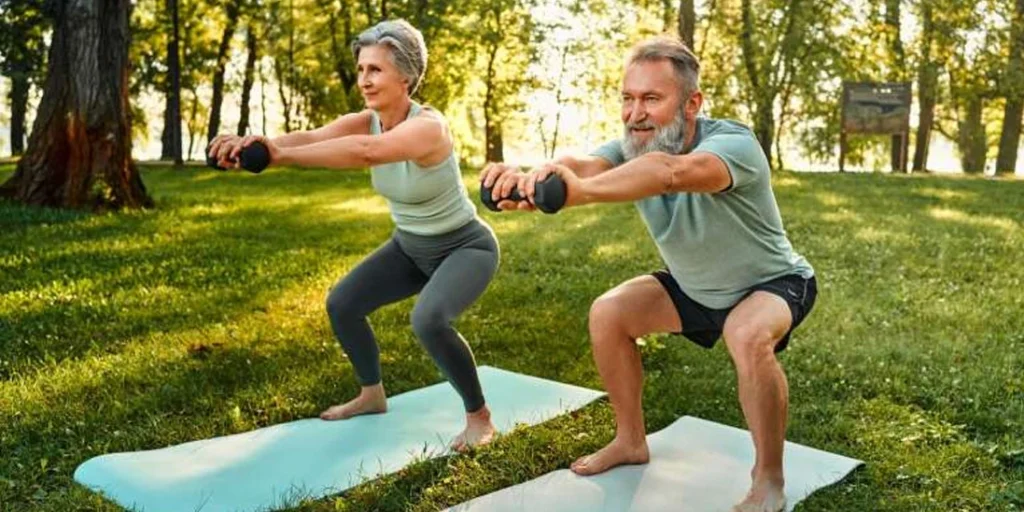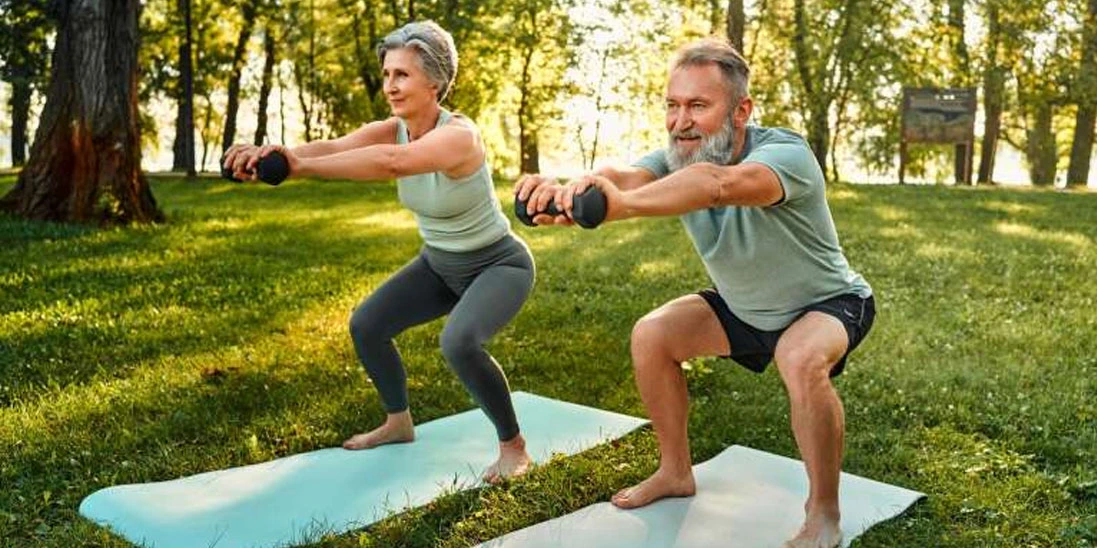10 Proven Ways to Improve Lung Health and Boost Respiratory Function
Your lungs work tirelessly, even when you’re not aware of it. Each day, they allow you to take around 23,000 breaths, bringing oxygen into your body and removing carbon dioxide. This vital process keeps every cell in your body functioning and ensures your energy levels remain stable. However, many people don’t consider their lung health until something goes wrong. Conditions like chronic obstructive pulmonary disease (COPD), asthma, and lung cancer can develop silently, often without early symptoms. As we age, our lung capacity naturally decreases, making it harder to breathe and more difficult to sustain oxygen flow throughout the body.
Maintaining lung health is crucial to overall well-being. By adopting proactive measures such as quitting smoking, exercising regularly, and protecting yourself from environmental pollutants, you can significantly reduce the risk of lung disease and improve lung function. Simple lifestyle changes and regular care can keep your lungs in optimal condition, ensuring they continue to serve you well into your later years. This article will guide you through practical, science-backed steps you can take to preserve your lung health and boost your respiratory strength for a healthier future.
Quit Smoking and Avoid Secondhand Smoke

Smoking is the leading cause of preventable lung diseases, including chronic obstructive pulmonary disease (COPD), emphysema, and lung cancer. Each puff of a cigarette introduces thousands of harmful chemicals, such as nicotine, carbon monoxide, and tar, into the lungs, damaging the airways and reducing their ability to function. Over time, this leads to chronic inflammation, narrowing the airways, and making breathing difficult. Smoking also accelerates the aging of your lungs, leaving you more vulnerable to respiratory infections and other diseases.
The good news is that quitting smoking provides immediate benefits, regardless of how long you’ve been smoking. Within just 12 hours of your last cigarette, the carbon monoxide levels in your blood begin to drop, allowing more oxygen to circulate. Over time, your lung function improves, and your risk of developing smoking-related diseases decreases dramatically. According to the American Lung Association, people who quit smoking cut their risk of lung cancer by half after 10 years.
In addition to quitting smoking, it’s essential to avoid secondhand smoke, which contains many of the same harmful chemicals. Even brief exposure can irritate the lungs and increase your risk of developing respiratory infections or chronic conditions. If you live or work in environments where smoking is allowed, consider asking others to smoke outside or create designated smoking areas to reduce exposure. Additionally, encourage friends and family who smoke to quit or avoid smoking around you and in shared spaces.
Quitting smoking is a challenging journey, but it is worth it. Numerous resources are available, such as counseling and medication, to help you succeed. The longer you stay smoke-free, the more your lungs can heal, and the better your overall health will be. By eliminating smoking from your life, you are taking one of the most significant steps toward protecting and improving your lung health.
Regular Exercise: Strengthening Your Lungs

Regular exercise is one of the most powerful tools for improving lung function and overall respiratory health. Physical activity not only strengthens the muscles used for breathing but also enhances the efficiency of your lungs. During exercise, your heart beats faster, and your lungs work harder to supply oxygen to your muscles. This process trains your body to use oxygen more effectively, leading to better endurance and lung capacity over time.
Aerobic exercises, such as walking, running, swimming, and cycling, are particularly beneficial for lung health. These activities increase your breathing rate, which helps expand your lungs and improve the strength of your respiratory muscles. The more regularly you engage in aerobic exercise, the more your lungs adapt to handle increased oxygen demands. This makes everyday activities easier and reduces the likelihood of feeling breathless during physical exertion.
Breathing exercises, such as diaphragmatic breathing, can also significantly enhance lung capacity. This method encourages deeper breaths, allowing you to maximize oxygen intake and strengthen your diaphragm. Over time, these exercises help improve lung function, making your lungs more efficient at oxygen exchange. Practicing controlled breathing techniques, especially if combined with physical activity, can be particularly helpful for people with respiratory conditions like asthma or COPD.
It’s important to remember that you don’t need to be an athlete to benefit from exercise. Incorporating moderate-intensity activities, such as brisk walking or dancing, into your daily routine can go a long way toward maintaining healthy lungs. Start slowly if you’re new to exercise, and gradually increase the intensity and duration of your workouts. Consistency is key—just 20 to 30 minutes of aerobic exercise a few times a week can make a significant difference in your lung health.
By keeping your lungs active and your body moving, you can maintain strong respiratory function, improve overall fitness, and enjoy a better quality of life well into your later years.
Maintain a Healthy Diet and Stay Hydrated

Just as with any other organ in your body, your lungs benefit from a healthy diet and proper hydration. The right nutrients can boost your immune system, reduce inflammation, and protect your lungs from harmful substances. A balanced diet rich in fruits, vegetables, whole grains, and lean proteins provides essential vitamins and minerals that support lung function and overall respiratory health. Foods high in antioxidants, such as berries, citrus fruits, and leafy greens, can help protect lung tissue from damage caused by pollution and toxins.
Staying hydrated is equally important for lung health. Drinking plenty of water throughout the day helps thin the mucus lining your airways and lungs. This allows your lungs to work more efficiently and helps you breathe more easily. In contrast, dehydration can cause mucus to thicken, making it harder for your body to clear out irritants and increasing your risk of infections, allergies, and breathing difficulties.
Omega-3 fatty acids, found in fish like salmon, nuts, and seeds, have anti-inflammatory properties that may benefit people with chronic respiratory conditions, such as asthma. Additionally, foods rich in vitamin C, like oranges and bell peppers, can improve lung health by reducing oxidative stress.
By maintaining a balanced diet and staying properly hydrated, you provide your lungs with the essential support they need to function at their best, keeping your respiratory system strong and healthy.
Protect Yourself from Air Pollution

Both outdoor and indoor air pollution can significantly impact your lung health, contributing to conditions like asthma, bronchitis, and even lung cancer. While your lungs have natural defense mechanisms to filter out harmful particles, prolonged exposure to pollutants can overwhelm these defenses and cause lasting damage. Fortunately, there are steps you can take to reduce your exposure and protect your lungs.
Outdoor Air Pollution
Outdoor air pollution, such as smog, vehicle emissions, and industrial pollutants, can be harmful, especially during high pollution days. Checking the air quality index (AQI) in your area is a practical way to determine when it’s safe to engage in outdoor activities. On days with poor air quality, try to stay indoors, particularly if you have a respiratory condition. Avoid exercising near heavy traffic or industrial zones where pollution levels are higher, and try to spend time in green spaces with fresher air.
Indoor Air Quality
Many people are surprised to learn that indoor air can often be more polluted than outdoor air. Common indoor pollutants include tobacco smoke, dust, mold, chemicals from household cleaners, and radon gas. Improving indoor air quality starts with maintaining a clean and well-ventilated environment. Regularly dusting surfaces, vacuuming carpets, and changing air filters can significantly reduce allergens and pollutants in your home. If you use cleaning products, opt for natural or low-chemical options, and make sure rooms are well-ventilated during use.
By taking these proactive steps, you can minimize your exposure to both indoor and outdoor pollutants, reducing the risk of respiratory issues and keeping your lungs healthy and strong.
Practice Deep Breathing and Diaphragmatic Breathing Techniques

Breathing exercises, particularly deep breathing and diaphragmatic breathing, are simple yet effective methods to enhance lung function and increase lung capacity. While most people tend to take shallow breaths that only partially engage the lungs, practicing deep breathing exercises can help you fully expand your lungs, improving the oxygen exchange and overall respiratory health.
Deep Breathing
Deep breathing involves consciously taking slow, full breaths that allow the lungs to fill completely with air. This practice helps clear out stale air from the lungs, allowing fresh, oxygen-rich air to enter. To perform deep breathing, sit or lie in a comfortable position, and slowly inhale through your nose, expanding your belly and chest. Hold the breath for a few seconds, then exhale slowly through your mouth, focusing on emptying your lungs completely. Repeating this process for a few minutes each day can strengthen your respiratory muscles and improve lung efficiency.
Diaphragmatic Breathing
Diaphragmatic breathing, also known as belly breathing, is a more advanced technique that focuses on using the diaphragm to maximize lung capacity. Instead of relying on shallow chest breathing, this exercise encourages deep inhalations that engage the diaphragm, the muscle located at the base of the lungs. To practice diaphragmatic breathing, place one hand on your chest and the other on your abdomen. Inhale deeply through your nose, allowing your belly to rise while keeping your chest still. Exhale slowly through pursed lips, feeling your belly contract. Over time, this method can strengthen your diaphragm and increase your lung’s ability to take in air.
Incorporating these breathing techniques into your daily routine can help enhance lung capacity, reduce stress, and support overall lung health.
Prevent Lung Infections with Good Hygiene

Lung infections, such as pneumonia and bronchitis, can severely impact your respiratory health, particularly for individuals with chronic conditions like COPD or asthma. Practicing good hygiene is essential to protect your lungs from infections and maintain their overall health. Simple habits can significantly reduce your risk of contracting illnesses that affect the lungs.
One of the most effective ways to prevent infections is frequent handwashing. Wash your hands with soap and water for at least 20 seconds, especially after being in public places, before eating, or after coughing and sneezing. If soap and water are not available, use a hand sanitizer containing at least 60% alcohol. By keeping your hands clean, you minimize the spread of germs that can enter your respiratory system.
Vaccinations also play a critical role in preventing lung infections. Getting an annual flu shot is highly recommended, as the flu virus can lead to serious respiratory complications, especially in older adults or those with pre-existing conditions. Additionally, if you are 65 or older, or if you have a chronic lung condition, you should consider the pneumonia vaccine to protect against pneumococcal infections. Stay up to date with all recommended vaccines, including boosters for COVID-19.
Maintaining proper hydration and a balanced diet rich in fruits and vegetables can also help boost your immune system, making your body more resilient to infections. By prioritizing hygiene and preventive care, you can protect your lungs from infections and keep them functioning optimally.
Get Regular Check-ups and Lung Screenings

Regular check-ups are essential for maintaining good lung health and catching potential issues early. Many lung conditions, such as chronic obstructive pulmonary disease (COPD) or lung cancer, can develop silently, showing no symptoms until they are advanced. By scheduling routine medical appointments, you increase the chances of detecting lung issues before they become serious, allowing for early intervention and better treatment outcomes.
During your check-up, your healthcare provider will likely listen to your lungs with a stethoscope to assess your breathing and detect any abnormalities. If you have any concerns, such as shortness of breath, a persistent cough, or wheezing, it’s important to share this information with your doctor. They may recommend further testing, such as a lung function test (spirometry) or imaging tests like a chest X-ray or CT scan, to get a clearer picture of your lung health.
For those at higher risk—such as smokers or individuals with a family history of lung disease—your doctor may suggest a low-dose CT scan to screen for lung cancer. This test can detect cancer at an early stage, even before symptoms appear, significantly improving the chances of successful treatment.
Regular check-ups, combined with lung screenings when necessary, can help ensure that your lungs remain in good condition, preventing severe illnesses and allowing you to address potential problems before they escalate.
Stay Active: Engaging in Consistent Physical Activity

Staying physically active is not only crucial for your overall health but also plays a vital role in keeping your lungs functioning at their best. Regular physical activity strengthens your respiratory muscles and improves your lungs’ ability to take in oxygen and expel carbon dioxide. Whether you’re young, old, or dealing with a chronic condition, incorporating exercise into your daily routine can help maintain healthy lung function.
Moderate-intensity aerobic exercises, such as brisk walking, cycling, swimming, or dancing, are particularly beneficial for lung health. These activities raise your heart rate and increase your breathing rate, providing your lungs with a natural workout. As your lungs adapt to the demands of exercise, they become more efficient at oxygen exchange, helping you avoid shortness of breath during physical exertion and improving your overall endurance.
Consistency is key when it comes to physical activity. Aim for at least 20 to 30 minutes of moderate exercise most days of the week. If you’re new to exercise, start slowly and gradually build up your stamina. Even activities like gardening, cleaning, or climbing stairs can contribute to maintaining healthy lungs if done regularly.
If lung conditions, such as asthma or COPD, limit your ability to engage in certain exercises, consider joining a breathing or pulmonary rehabilitation program. These programs provide specialized exercises and breathing techniques designed to improve lung function and quality of life. Staying active is one of the best ways to support your lungs and ensure they continue to function well, even as you age.
Conclusion: Prioritize Lung Health Daily
Your lungs work tirelessly every day, ensuring your body receives the oxygen it needs to function. By incorporating simple but effective habits into your daily routine, you can protect and strengthen your lungs for the long term. Quitting smoking, staying active, maintaining a balanced diet, practicing good hygiene, and avoiding harmful pollutants are all critical steps toward better lung health. Regular check-ups and breathing exercises can further enhance your lung function, allowing you to breathe easier and live a healthier, more active life.
Prioritizing your lung health is an investment in your future well-being. By making these small changes today, you can safeguard your lungs against disease and ensure they continue to serve you well for years to come. Take charge of your lung health now and enjoy the benefits of a healthier, more vibrant life.
Hey there! I’m Susan Anderson, the founder and chief content editor at reviews-master.com. I’m passionate about exploring and sharing the most trusted information and product reviews in the world of health and wellness—from weight loss and joint pain to neuropathy and holistic living.
With over 10 years of experience in holistic health blogging, I aim to help you navigate your wellness journey with honest insights, expert-backed advice, and a sprinkle of real-world practicality.
Certified Wellness Writer | Herbal Nutrition Advocate | Wellness Research Enthusiast





